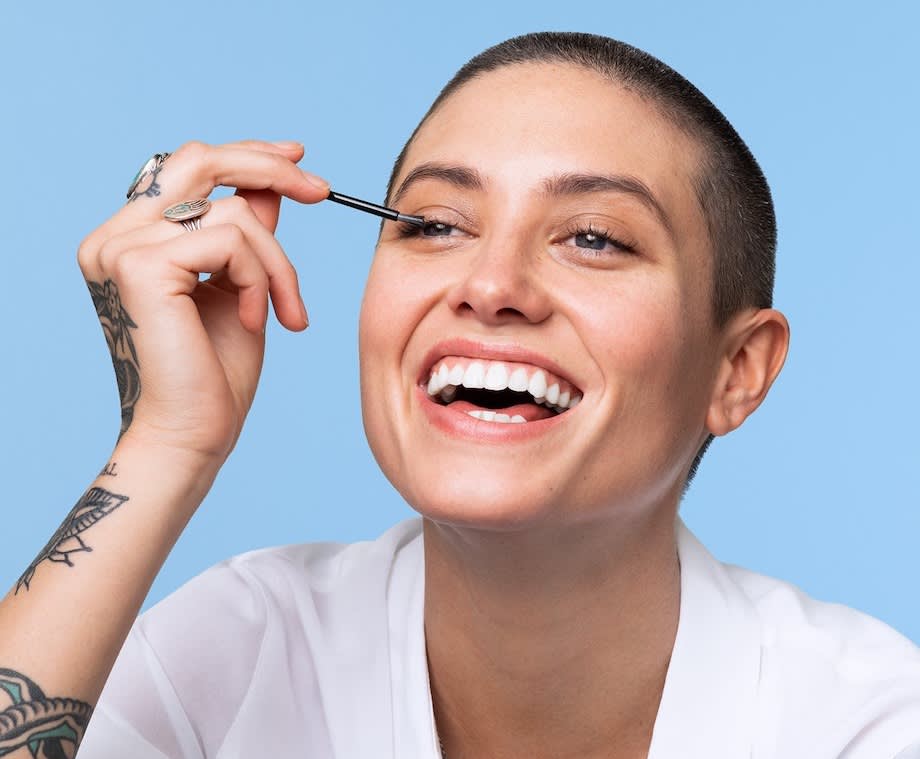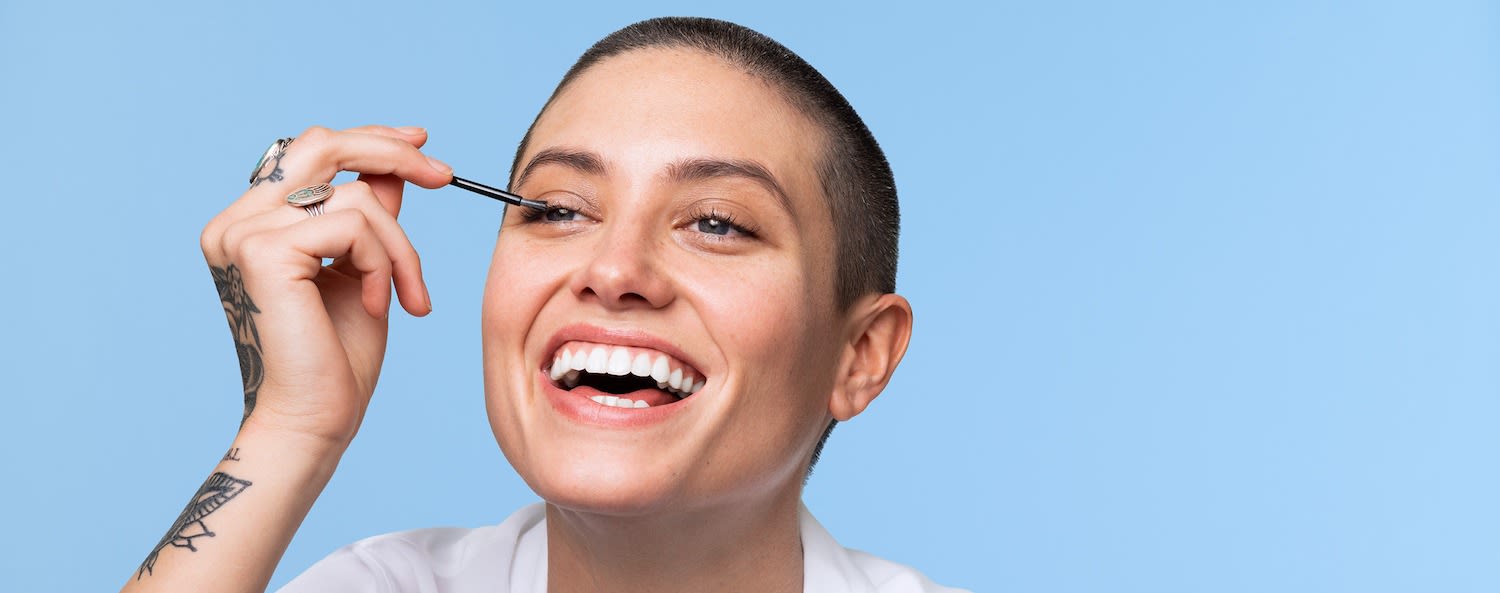General
The big question about Latisse®: will it change your eye color?


SHARE
General
The big question about Latisse®: will it change your eye color?
Medically reviewed by Aimee Paik, MD
Written by Apostrophe Team
Last updated 7/5/2022
So you notice your friend, or your hairdresser, or your coworker seems to have sprouted longer and fuller eyelashes overnight. When you ask them where they’ve gotten their eyelash extensions done, they begin raving about Latisse, the solution they've been using to grow those luscious lashes all on their own. But when you start looking into this miraculous growth serum, a lot of people are saying it could change your eye color from blue to brown! So what’s the deal? Let’s break it down.
The only FDA-approved treatment for thin lashes
First things first. Latisse (generic name: bimatoprost ophthalmic solution) is the only FDA-approved treatment designed to grow your lashes. As a prescription drug, it should be used under the supervision of a medical professional because it does carry real risks if it is used by patients who have conflicting eye conditions. The FDA first approved bimatoprost as a glaucoma medication under the brand name Lumigan, so while it is now being used for cosmetic purposes, it does have other medical uses that may affect those with certain conditions. Keep reading to learn more about how Latisse’s use and application differs from Lumigan!
Fact and fiction
Now let’s get into the nitty gritty of what those possible side effects could mean for you. Allergan, the manufacturer of Latisse, lists “brown darkening of the colored part of the eye” as a possible side effect of using Latisse. Now you might be thinking, “Ha! The internet was right, Latisse is too good to be true!” However, this warning is a result of studies done on Lumigan, which is dropped directly into the eye rather than applied topically to the upper lash line. One of the dermatologists on our platform, Dr. Bradley Beckman, says that when Latisse is applied correctly the risk of eye color change is “way under one percent.”
To understand why this risk is so low, let’s take a look at how Latisse can cause pigment changes.
Show your true colors
Latisse affects melanin, the pigment that gives hair, eyes, and skin their colors. The more melanin in your eyes, the darker they are. Pure blue eyes do not contain any melanin while brown eyes contain the most. Studies show that active ingredients in Latisse can change eye color by increasing the size of the melanin granules in the eye. This means that blue eyes (and brown eyes) should not show any color change with the use of Latisse (yay!). However, hazel eyes (and other eyes of mixed coloring) do show a risk of eye color change with Latisse.
Low risk, high reward
What does all this information mean? Well, the overall risk of your eye color changing is still very small. When we asked for Dr. Beckman’s opinion, he reiterated that he has never seen a case of eye color darkening in his practice. At Apostrophe, we want to arm you with the information you need to make an informed choice. Weigh your individual risk factors (age, eye color, etc.) against your desire for longer and thicker lashes. So whether you decide to try an online Latisse subscription or stick to mascara, we support you!
Have something to say about Latisse? Got a Latisse success story? Tweet at us at @hi_apostrophe!
1. Cracknell K, Farnell D, Grierson I. Monte Carlo simulation of latanoprost induced iris darkening. Computer Methods and Programs in Biomedicine. 2007;87(2):93-103. doi:10.1016/j.cmpb.2007.04.010
2. Hair and skin colour. DermNet New Zealand. https://www.dermnetnz.org/topics/hair-and-skin-colour/. Accessed February 27, 2019.
3. Slembrouck PV. Structural Eye Color is Amazing – Paul Van Slembrouck – Medium. Medium. https://medium.com/@ptvan/structural-eye-color-is-amazing-24f47723bf9a. Published December 13, 2014. Accessed February 27, 2019.
4. The first prescription treatment for inadequate or not enough eyelashes | LATISSE® (bimatoprost ophthalmic solution) 0.03%. Latisse. http://www.latisse.com/. Accessed February 27, 2019.
5. Wistrand PJ, Stjernschantz J, Olsson K. The incidence and time-course of latanoprost-induced iridial pigmentation as a function of eye color. Survey of Ophthalmology. 1997;41. doi:10.1016/s0039-6257(97)80020-3
Like what you just read? Sign up for our email list to get the scoop on skincare science delivered straight to your inbox.

Deep Dives
A dermatologist shares his thoughts on the recent studies about benzoyl peroxide and benzene.
Read More
Education
What is milia?
What is milia? Today, we’re jumping into one type of bump that you may have heard about most commonly in infants — milia.
Read More
Education
Best moisturizer for acne-prone skin
If you have combination acne-prone skin, figuring out which moisturizer is best for your skin might be tough. In this guide, we break down the best moisturizer for combination, acne-prone skin.
Read More